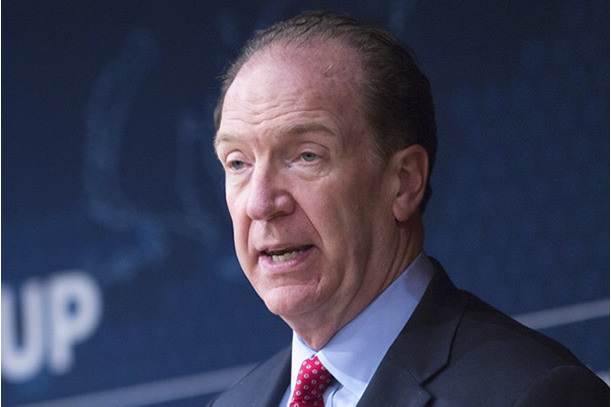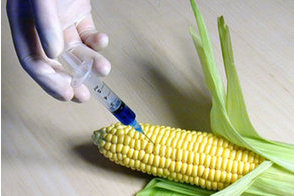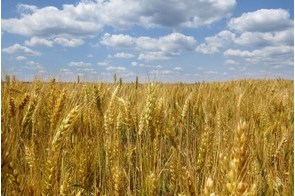A transformed fertilizer market is needed in response to the food crisis in Africa

Summary
Natural gas markets are being drained for future winter heating and chemical production, leaving too little for current fertilizer production, disproportionally affecting smaller fertilizer producers.
One clear message from my dozen meetings last week (third week of December 2022) with African leaders who were in Washington for a summit with the U.S. government was that fertilizer prices are out of reach for most farmers, putting the crop cycle and rural stability at risk. Across 45 countries globally, 205 million people are in acute food insecurity, meaning they have so little access to food that their lives and livelihoods are in danger.
One key obstacle to food production in many developing countries is access to fertilizers, which enrich the soil with the nutrients needed for healthy crops. Sufficient primary raw materials – nitrogen, potash, phosphate, and natural gas – and fertilizer production facilities are essential to farmers across the developing world, but high fertilizer prices are blocking the 2023 and 2024 crop cycle.
The challenge is particularly evident in Sub-Saharan Africa. Fertilizer prices have tripled since early 2020 and remain volatile, putting a stable supply of fertilizer out of reach of many small farmers. Fertilizer exports from Belarus and Russia – important fertilizer suppliers for Africa – have been disrupted by the war, while some other exporting countries have restricted the supply through export taxes, bans and licensing requirements, in part to protect their own farmers. With agricultural prices high, farmers in more advanced countries can afford to plant more and order more fertilizer, benefiting from subsidies that often cover the cost of the natural gas needed for fertilizer and the diesel fuel needed for farm equipment.
African leaders used the summit to emphasize that farming families in developing countries will not be able to survive, much less compete. This is the same crisis they have raised throughout the year in the G7, G20 and G24 meetings, the World Bank/IMF Annual Meetings, and the UN climate and biodiversity meetings in Egypt and Canada. If current trends continue – high prices for natural gas and coal, commodity crops and fertilizer and elevated consumption of the available supplies by those with higher incomes and subsidies than Africa’s – the more-industrialized economies will increase their market share and dominate even more of the world’s total crop production and agricultural fossil fuel use. This will leave little room for farming in Sub-Saharan countries, especially poorer households, resulting in a long and deep food and jobs crisis, especially in rural Africa.
The world’s ability to quickly realign energy and fertilizer supply chains in ways that leave room for poorer farmers will be one of the determining factors in the length and severity of the food crisis in Africa and the displacement of rural populations already under pressure from climate change. This entails substantial change in both advanced economies and developing countries.
The first key step is to leave room for developing countries in global natural gas and fertilizer markets. Over time, greater production is vital to replace Europe’s dependency on Russia, but in the short run, it is important for the advanced economies to avoid locking up the current supply to overly guard against risk of shortages. Natural gas markets are being drained for future winter heating and chemical production, leaving too little for current fertilizer production, disproportionally affecting smaller fertilizer producers.
Avoiding stockpiling and increases in production should be augmented by efficiency gains and reduced subsidies for consumption. This applies to many parts of the energy supply chain, and also to fertilizer where application rates are an important part of efficiency. They are much too low in Sub-Saharan Africa, reducing crop yields, while staying wastefully high in other parts of the world despite high fertilizer prices. This is partly due to crop subsidies.
Sub-Saharan Africa has an average fertilizer application rate of 22 kilograms per hectare, compared to a world average seven-times higher (146 kilograms per hectare). Some countries, such as China and Chile, are closer to 400 kilograms per hectare. On average globally, less than half of the nitrogen fertilizer applied at the farm contributes to plant growth, with the rest polluting our waterways.
There are several explanations for the excessive use of fertilizer by higher-income farmers. The canard that more is better is one explanation. Fertilizer is not a large cost factor given other inputs such as labour and equipment, so the amount being applied is less scrutinized. Farming practices are hard to change. Subsidies for fertilizer-hungry crops are another factor. In 2020, the U.S. used as much nitrogen just for the corn burned to make ethanol as half of all the nitrogen used across Africa for agricultural purposes.
Africa must help in this realignment by improving its internal trade and logistics barriers. The continent produces approximately 30 million metric tons of fertilizer each year, twice as much as it consumes. And yet, approximately 90 percent of fertilizer consumed in Sub-Saharan Africa is imported, mostly from outside the continent. This reflects inefficiencies in shipping and port costs, distribution chains, information availability and other trade frictions.
Each factor needs a concerted effort by African nations to fix the system. Better trade infrastructure and trade facilitation measures such as harmonized rules have an important role. When technically and economically feasible, local production can complement trade by reducing transport and logistics costs. A large urea fertilizer plant recently opened in Nigeria to convert natural gas into fertilizer, but a portion is used to subsidize inefficient Nigerian buyers and a large portion is exported to Latin America, leaving farmers in Africa dependent on other markets.
In the meantime, several external programmes are helping on the margins. Private fertilizer donations and shipments via the Black Sea Grain Initiative have helped to ease some supply challenges. Other initiatives include the $6 billion IFC Global Food Security Platform, which is providing credit access to address liquidity constraints in the private fertilizer supply chain, and the $30 billion World Bank food and nutrition security package focused on developing countries.
The International Monetary Fund’s new Food Shock Window provides a channel for emergency financing for countries with urgent balance of payment needs related to food and fertilizer. The G7 and World Bank are also engaging in critical partnerships such as the Global Alliance for Food Security to support countries in distress and address the key issues contributing to this crisis.
We must make sure these efforts increase availability without inadvertently destroying the decades-long effort to build up private fertilizer markets in Africa. This means continuing to support market development and enabling the private sector. In Kenya, for example, a World Bank programme providing fertilizer e-voucher subsidies helps eligible smallholder farmers purchase fertilizer from private retailers at a subsidized rate, increasing productivity by more than 50 percent, enhancing crop diversification, and building private sector capacity.
In responding, we should not miss the opportunity to build more resilient and sustainable fertilizer and agricultural markets for the future. More efficient application rates would help reduce greenhouse gas emissions. The production and use of nitrogen fertilizer alone accounts for about 2 percent of global greenhouse gas emissions, so it is important to minimize waste.
There is also a need to invest in green fertilizer production and efficient use. The technology to produce ammonia needed to manufacture nitrogen fertilizer with renewable energy has not yet been widely adopted. Among others, in Egypt, Kenya and South Africa, green ammonia plants are in development. Technologies to reduce nitrous oxide emissions during fertilizer use can also be more widely applied. Increasing research and outreach efforts for digital and precision agriculture practices, technical assistance, and incentives for adopting climate smart agriculture, and investing in soil health can boost the efficiency of fertilizer application and absorption.
Importantly, we must also take advantage of existing opportunities to use public spending to build longer-term food systems resilience. Fertilizer subsidies in both developed and developing countries can be repurposed towards measures that reduce overuse, decreasing the sector’s carbon footprint while increasing fertilizer availability. If the countries that overapply fertilizer reduced their consumption to adequate levels, access could increase in countries consuming well below the world average.
In sum, it’s urgent to make fertilizers more accessible and affordable to avoid prolonging the food crisis. Lives and livelihoods depend on the choices of policymakers.
David Malpass is the President of the World Bank Group. Source: World Bank Blogs.
Related
-
U.S. firm infuriated by Africa’s rejection of genetically modified foods
Some scientific reports have said genetically modified foods have negative health implications.
-
Challenges and opportunities in agriculture in Africa
Africa has the ability to grow enough food to help solve the worldwide food deficit.
-
Optimising wet period for dry season farming
Plans for 2024-2025 dry season farming should by now be underway by concerned ministries, including the ministry for ...







